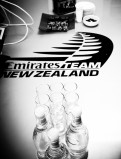PR Not Measuring Up
Last weeks’ Holmes’ Report covered its recent survey of more than 100 PR Agency principles – the
results of which point to some of the problems that continue to make research and evaluation a major issue for the industry.
"In general, their responses suggested that an failure of commitment- rather than the absence of necessary tools and techniques—is behind the industry’s poor performance."
Damn right. Never have we had more tools. And more arrive every week. The barrier however remains a lack of commitment at the top. Too many organizations I talk to are only looking to measure where Executives demand it. It’s not viewed as a key ingredient in strategic planning and establishing a proactive dialog with the business. As a result, it’s not resourced or budgeted for.
Look at any of the best-in-class measurement efforts – like those at Southwest airlines – and you’ll see the reverse in action: a commitment from the most senior levels of the company to measuring not just to validate spend, but to drive business strategy; dedicated resources; and they’ve put their money where there mouth is (and this is one very, very, very budget sensitive organization).
According to the study, Agency leaders believe the biggest obstacle to effective measurement is the unwillingness of clients to pay additional fees for evaluation Why not just mandate it as part of any budget? If you aren’t clear on the outcomes, and can’t measure your effectiveness in achieving those outcomes, why work for the client? Holmes gets this:
“At the very least, that suggests the need for a broader dialogue between agencies and their clients about the importance of research. But it might also require a change in attitude on the part of agency leaders, who need to realize that investing in measurement is the only way to guarantee that clients value the services agencies provide and commit to PR spending in good times and bad.”
I just don’t understand how any PR department or practitioner can operate without a measurement program in place. Measurement isn’t monitoring. Monitoring isn’t measurement. What I am talking about here is a deep understanding of how communications impacts business outcomes. An understanding based on research not just of what occurred in the media, but also in the minds of your customers. Without that you shouldn’t expect resources, budget, even a job.
Top Ten Web 2.0 Moments of 2005
Richard has a good wrap-up of the Top Ten Web 2.0 moments of 2005. He has started adding a few of the others like ‘Google Maps mashup’. One of the big ones for me is the emergence of the Web 2.0 ‘framing’ – it defines a whole new generation of ‘software as a service’ and ushers in a new level of utility in terms of how we use software.
Another Top Ten Web 2.0 moment – and it was more of a steady drum-beat than a moment – was the emergence of the Wiki as a participatory platform. And the emergence of new challenges to public Wiki platforms – like inaccuracy in entries.
I’ll also look back on this year as the year that the Participatory Era took hold. Suddenly millions of users really started participating in the conversation, establishing new dialogues and framing new debates. Recommenders started taking hold of products’ destinies. And new participatory engines – from Blogs to Wikis and Ajax-based applications like Meebo – emerged.
Ahhhhhhhhh… Meebo
TypePad has been down – they are slowly republishing posts. I guess this means you will all get new old feeds from Larkey… Sorry. Stuff happens. Zoundry still not working either – I’m guessing that has something to do with "the TypePad thing". I know the TypePad team is probably working hard to fix this.
I’m remain a big recommender of TypePad – they should have me on commission. Is it that bad? Not really – especially given I can’t hold a mobile phone call between the office and home. I can’t hold a Windows session for more than a day. And my Sony VAIO is as noisy as the neighbors air conditioning system.
Saying that, basing service level satisfaction on how bad others are is never a good thing. So my message the TypePad is simple – the bar is low, stop letting it hit you in the head. We are with you and love what you enable us to do. But you’ve got to start leaping over that bar. Otherwise we will become users, not evangelists.
So, to brighten up my day I’ve been playing with other things and I do like Meebo. This, unlike TypePad, is a beta so it has some quirks (if you close the browser you have to re-enter all the usernames and passwords… + more)… But then TypePad has some quirks now and then. Meebo has a ton of promise.
Cool Skype Phones…
One of these for Christmas please… Have been hunting for a Skype phone that supports Mac and these look great.
The Elements Of Typographic Style Applied to the Web
Worth a read… a classic applied to the Web. Richard describes it as follows:
Robert Bringhurst’s book The Elements of Typographic Style is on many a designer’s bookshelf and is considered to be a classic in the field. Indeed the renowned typographer Hermann Zapf proclaims the book to be
a must for everybody in the graphic arts, and especially for our new friends entering the field.In order to allay some of the myths surrounding typography on the web, I have structured this website to step through Bringhurst’s working principles, explaining how to accomplish each using techniques available in HTML and CSS. The future is considered with coverage of CSS3, and practicality is ever present with workarounds, alternatives and compromises for less able browsers.





